NOVA Air Scoop is an optimised air intake, which increases the internal wing pressure. NOVA's Air Scoop principle is similar to the ram-air inlet duct on a sports car: increased airflow produces higher pressure. Higher internal pressure in a paraglider means improved performance through increased structural stability and collapse resistance.
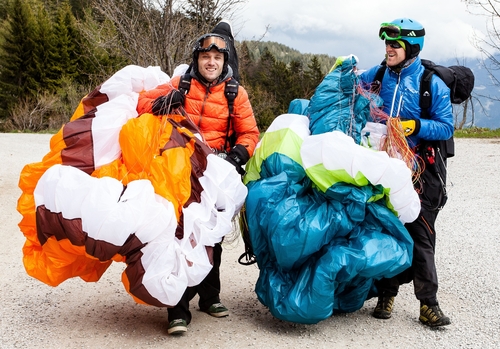
The NOVA TRITON 2 is a breath of fresh air in the serial performance glider class, which follows in the tradition of former DHV 2/3 wings. On the one hand, theTRITON 2 offers impressively good performance and therefore the potential for league, competition and ambitious XC flights; on the other hand, the flying characteristics of the wing are completely manageable for an experienced pilot. So it is exactly what discerning pilots want: the ultimate flying machine, which combines performance with certification-appropriate safety.
Thanks to the selected moderate aspect ratio (6.4 flat) the TRITON 2 offers the whole range of flying characteristics: the wing is agile, brake pressure is low and it invites you to play above the landing field after completing a satisfying XC flight. The TRITON 2 therefore offers everything a keen cross-country pilot wants: excellent performance, good certification-appropriate passive safety, a wing that is greedy for the best lift in thermals, very sensitive brakes and a glider that offers an exceptionally high fun factor.
Triton 2 data
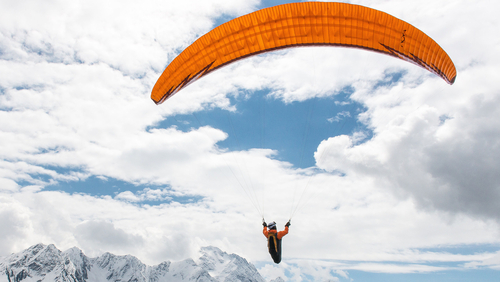
Technologically ahead. The Triton 2 is the result of NOVA’s 25 years experience in designing paragliders. Its flying behaviour was predicted using analytical tools and airflow simulations. Inside the wing, innovative needle-eye ribs distribute the tension across the span of up to five cells at a time. The needle-eye ribs are each made out of one piece of material and traverse through slots in the profile ribs. This results in a more precise shape than is achieved in a conventional four or five piece rib, which is implemented using multiple-piece diagonal ribs. 3D-Shaping and optimised position and size of the cell openings enhance the performance potential of the Triton 2.
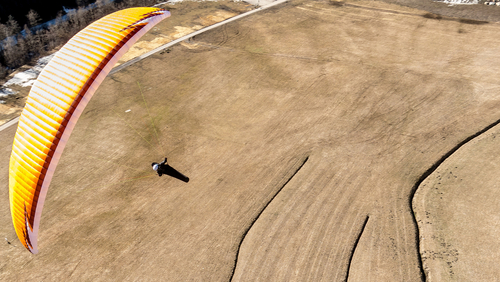
Genuine performance. No folding line. No cross-line. No other tricks were used. The Triton 2 is a performance three-liner suited to a skilled and experienced pilot. And they will get what they expect: a wing with exceptional performance which has been fully tested in all possible collapse scenarios. The leading edge of the Triton 2 is reinforced with extremely flexible rods, but these are short and end just after the A area. In comparison to the Triton 1, the A area was not set back. For this reason, collapses are generally less extensive – we found this both during induced asymmetric collapses using the A-riser, as well as in spontaneous collapses in turbulent air. With a moderate aspect ratio of 6.4 (flat) the Triton 2 continues the tradition of its predecessors, the Tycoon and Triton 1.
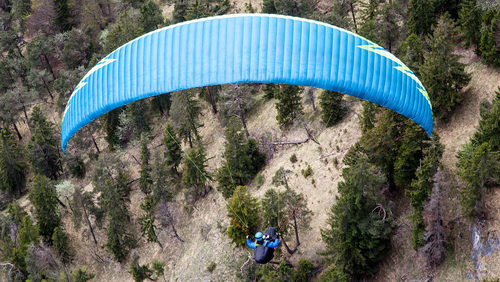
Innovative and progressive. With its aspect ratio, wing area and its passive safety features, the Triton 2 is a traditional glider, but simultaneously it comes with a bundle of innovations. One of these is the mix of materials: to improve its extreme flight behaviour, we used a very light but durable material (32 g/m2), which also features in the Mentor 3 light. The leading edge is fitted with an improved Nova air scoop which increases the internal wing pressure – especially in accelerated flight. The Triton 2 therefore profits from the know-how that we gained from developing the Ion and Mentor series.
Target group
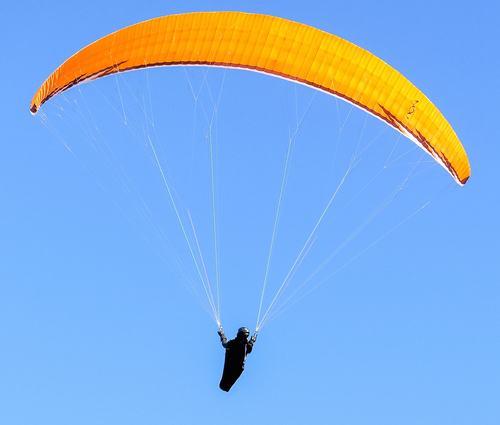
The TRITON 2 is a high performance wing for an experienced and current pilot. The wing distinguishes itself by impressive performance combined with (for its class) very manageable extreme flight behaviour. In terms of pilot requirements, the TRITON 2 is the same as its predecessor, the TRITON 1.
Extended weight range
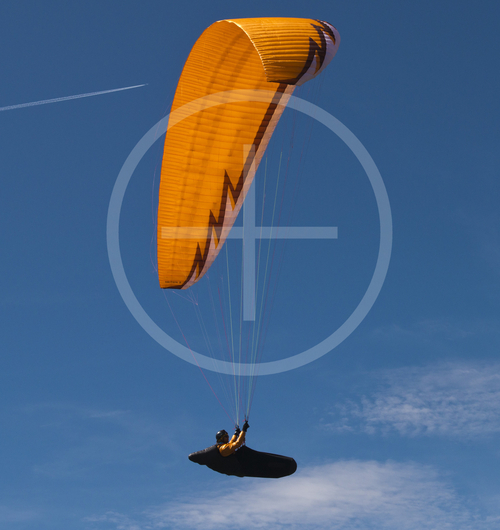
In sizes S, M and L, the TRITON 2 has an extended weight range. In size M we recommend a weight range from 90 to 107kg, although the wing is certified up to 115kg. In size L, the optimal allup weight is 100 to 120kg, but it can be flown up to 130kg within its certified weight range.
For crosscountry flying we advise staying within the recommend weight range. The extended range is for those to whom high speed is the primary consideration. The TRITON 2 displays its best flight characteristics in the upper half of the optimal weight range.
FAQ
Simplicity is our motto. Our wings can be packed using a concertina bag, but it is not essential. You can fold this wing using your preferred method and pack it in our stuff sack. Be careful not to bend the leading edge rods unnecessarily. This is particularly true if the wing is to be stored for longer periods or if it is packed tightly.
The brakes are components relevant to certification - modification can affect the flying characteristics and extreme flight behaviour. Because of this, we strongly advise against any modification of the brake system. It is important that the brake has sufficient travel before it engages. This is also important so that the wing does not brake automatically when the speed bar is used. Furthermore a brake that engages too early affects performance and influences the recovery during incidents, for example during a collapse or when the canopy goes parachutal.
During the initial flights the lines are first subjected to load. This load induces a small degree of stretching and shrinking. These are not associated with the line manufacturers or the quality of workmanship - in the factory all NOVA paragliders are trimmed and pre-stretched to within a very low tolerance. To adjust this stretching or shrinking, we recommend that the wing is taken for NTT (NOVA Trim Tuning) after ten to twenty flights - after one year at the very latest. Generally, the line lengths remain constant after the first ten to twenty hours. To make full use of the NTT, NOVA encourages all pilots to have their wing checked after ten to twenty flying hours.
Dry, not packed too tightly and if possible in a space without wide temperature variations - these are the conditions that make our paragliders feel well. You should never store a wing when it is moist. You should also avoid excessive heat, like you would have, for example, in the car. Never remove dirt using chemical detergents and/or brushes.
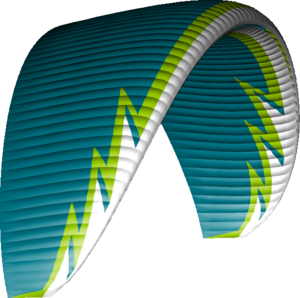 Petrol
Petrol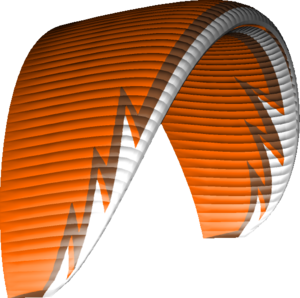 Orange
Orange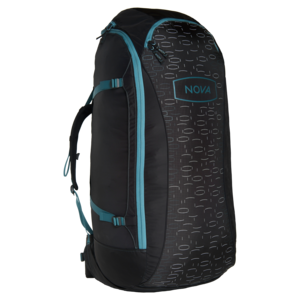 NOVA Rucksack.
NOVA Rucksack.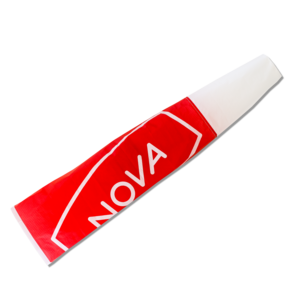 NOVA windsock.
NOVA windsock.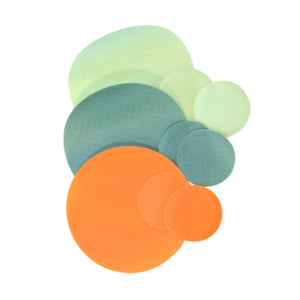 Repair kit.
Repair kit.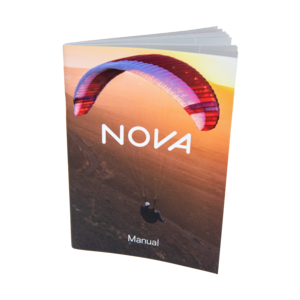 Manual.
Manual.